Future-Proof Lighting for 2026 - Fixtures Designed for Homes That Don’t Stay Static
Homes are no longer designed to serve a single, fixed purpose. By 2026, the pace of lifestyle, technology, and environmental change will make adaptability the new foundation of modern living. Lighting, as one of the most fundamental elements of interior design, must evolve alongside these shifts. Several forces are driving this transformation:
Hybrid lifestyles: The pandemic reshaped the way people use their homes, and that shift isn’t reversing. In 2026, the typical household will juggle remote work, digital learning, streaming entertainment, and social gatherings—all under one roof. A dining table might function as a workstation by day and a family hub by night. Lighting must flex seamlessly between productivity-focused task illumination and warm, social ambiance.
Smaller living spaces: Urbanization is fueling the rise of micro-apartments and compact housing. These homes demand multifunctional rooms where lighting defines zones without adding clutter. Modular and reconfigurable fixtures are becoming key in making a 400-square-foot apartment feel both like an office and a cozy retreat.
Sustainability demands: Eco-conscious homeowners are rejecting disposable, short-lifespan products. Instead, they want lighting solutions that evolve with their needs rather than being replaced every few years. Long-life LEDs, modular systems, and recyclable materials are not just trends but necessities, aligning with global goals to reduce carbon footprints and electronic waste.
Technology-driven homes: The average home is rapidly becoming a node in the Internet of Things. By 2026, smart speakers, AI assistants, and interconnected devices will not just coexist—they will anticipate and automate living patterns. Lighting that integrates with these systems—adapting to voice commands, learning user preferences, and syncing with circadian rhythms—will ensure homes remain fluid and future-ready.
In short, homes in 2026 won’t stay static because the people living in them won’t. This constant shift requires lighting that isn’t fixed in time but evolves with lifestyle, spatial, environmental, and technological demands.
What “Future-Proof Lighting” Means
The term future-proof lighting goes beyond simply installing energy-efficient bulbs or trendy fixtures. It refers to lighting solutions designed to evolve alongside changing lifestyles, advancing technology, and growing sustainability demands. In a world where homes are constantly shifting between work, leisure, and family functions, fixtures must be flexible enough to serve multiple roles without becoming obsolete.
At its core, future-proof lighting is built on several defining features:
-
Modularity: Fixtures that can be reconfigured, expanded, or reduced depending on how a space is used. For instance, modular track systems allow homeowners to add or reposition lights as their rooms transition from office setups to entertainment zones.
-
Smart Integration: Compatibility with connected ecosystems like IoT devices, AI assistants, and mobile apps ensures that lighting can adapt to new technologies instead of being left behind. A truly future-proof fixture should work seamlessly with voice control, automation routines, and AI-driven personalization.
-
Energy Adaptability: Beyond efficiency, future-proof lighting supports evolving energy standards and sustainability practices. This includes tunable LEDs that adjust brightness and color temperature, solar-assisted options, or fixtures built from recyclable materials designed for long lifespans.
-
Timeless Design: Styles change quickly, but fixtures with clean lines, neutral finishes, and customizable accents can outlast short-lived trends. The goal is a design that adapts without requiring frequent replacements.
In essence, future-proof lighting is about creating lighting that adapts to change. It gives homeowners the freedom to rethink and rearrange their environments without discarding old systems, making modular lighting systems and smart-ready fixtures central to the homes of 2026 and beyond that.
Key Features of Future-Proof Lighting Fixtures
Future-proof lighting isn’t just about illumination—it’s about adaptability, longevity, and integration into the evolving home. The fixtures of 2026 are designed to shift with homeowners’ lifestyles while reducing environmental impact. Below are the core features that define these solutions:
1. Smart & Adaptive Controls
Lighting is becoming intuitive, responding not just to switches but to people and patterns. Future-ready fixtures feature:
-
Voice and AI integration for hands-free operation via assistants like Alexa, Google Home, or AI-driven platforms.
-
Circadian rhythm lighting that automatically adjusts brightness and color temperature to support productivity during the day and relaxation at night.
-
Presence detection to minimize energy waste by activating lights only when someone is in the room.
Example: Tunable white LEDs that brighten to crisp daylight tones during work hours and shift to warm, cozy hues for evening wind-down.
2. Modular & Reconfigurable Designs
As homes evolve, so should their lighting layouts. Modular fixtures allow for reconfiguration without costly rewiring.
-
Expandable systems that can grow as rooms change purpose.
-
Repositionable fixtures for easy zoning in multipurpose spaces.
-
Plug-and-play components that simplify upgrades.
Example: Magnetic track lighting or modular pendant clusters that can be rearranged as a dining room transitions into a remote office.
3. Energy & Sustainability Factors
Sustainability is at the core of future-proof design. Lighting must conserve energy while reducing waste.
-
Solar-assisted or hybrid power options for lower carbon footprints.
-
Recyclable and low-impact materials that meet eco-conscious consumer demands.
-
Ultra-efficient LEDs with extended lifespans, reducing replacement cycles.
SEO anchor: eco-friendly lighting fixtures 2026.
4. Timeless Aesthetics
Designs must balance style with longevity. Instead of chasing fleeting trends, future-proof fixtures emphasize:
-
Minimalist, versatile forms that work across different décor themes.
-
Customizable accents—such as swappable shades or finishes—that update the look without replacing the fixture.
-
Neutral palettes designed to complement changing interiors.
Example: A clean-lined pendant with interchangeable metallic or fabric shades for evolving interior trends.
5. Multi-Functional Fixtures
Lighting will increasingly serve dual or triple roles in compact, hybrid homes. Fixtures designed with added utility enhance both function and value.
-
Integrated speakers for immersive audio-visual setups.
-
Air-purifying systems to improve indoor wellness.
-
Acoustic panel lighting to reduce noise in remote work or study spaces.
Example: Ceiling fixtures that combine LED lighting with sound-absorbing materials, creating better acoustics in hybrid workspaces.
Trends Shaping Lighting for 2026
1. Wellness Lighting
Health-conscious homeowners are driving demand for lighting that aligns with natural human rhythms. Circadian-friendly fixtures shift color temperature throughout the day, simulating sunrise, daylight, and sunset to regulate sleep cycles and boost productivity. Mood-based lighting scenes—whether energizing, calming, or romantic—are also becoming a standard feature in smart homes.
2. AI-Driven Personalization
Artificial intelligence is taking lighting control to the next level. Fixtures will learn user habits and automatically adapt brightness, intensity, and color temperature. For example, a system might brighten gradually as you wake, dim during focused work sessions, and switch to warmer tones in the evening—all without manual input. This trend ensures lighting feels effortless, personalized, and responsive.
3. Wireless Freedom
The rise of cordless, rechargeable, and portable lamps reflects the demand for flexibility in dynamic homes. Homeowners no longer want to be bound by outlets or fixed wiring. Instead, they seek lightweight lamps and magnetic fixtures that can move from a reading nook to a balcony, or even travel between rooms, offering complete spatial freedom.
4. Biophilic Integration
Inspired by nature, lighting is being designed to mimic natural light cycles and incorporate sustainable, organic materials like bamboo, stone, and recycled glass. Some fixtures even emulate the dappled effects of sunlight through trees or the soft glow of firelight, blending aesthetics with emotional comfort. This trend supports mental wellness while reconnecting indoor spaces with the rhythms of the outdoors.
5. Resilient Design
With smart homes evolving rapidly, consumers need fixtures that won’t become obsolete with the next software update. Resilient lighting systems are built to integrate seamlessly with new platforms, ensuring longevity and compatibility as ecosystems expand. This adaptability reduces waste, saves money, and ensures lighting investments remain future-proof.
The Sustainability Angle
Why Buying Once, Upgrading Often = Greener Future
The throwaway model of buying cheap fixtures that fail within a few years is unsustainable. Future-proof lighting emphasizes durability and upgradeability, allowing homeowners to update features (such as bulbs, drivers, or smart controls) without discarding the entire fixture. This approach conserves raw materials, reduces landfill waste, and aligns with the growing “right-to-repair” movement.
Modular vs. Disposable Lighting Systems
Traditional lighting often locks consumers into single-use products—once a fixture breaks or becomes outdated, it’s replaced entirely. Modular systems, by contrast, allow parts to be swapped out or expanded over time. For instance, magnetic track systems let homeowners add new components instead of reinstalling a whole unit, while modular smart bulbs can receive software updates instead of becoming obsolete. This shift from disposable to adaptable design extends product lifespans and reduces environmental impact.
Energy Codes & Regulations by 2026
Governments worldwide are tightening efficiency standards, and lighting is at the center of these changes. By 2026, stricter energy codes will likely mandate ultra-efficient LEDs, automatic dimming systems, and smart energy management in new builds. Homeowners who invest in eco-friendly lighting fixtures (2026-ready) now are future-proofing themselves against regulatory shifts, while also lowering long-term energy bills.
Practical Applications in Modern Homes
Home Offices
With remote and hybrid work here to stay, lighting in home offices must serve both practical and aesthetic needs. Adjustable task lights improve focus and reduce eye strain during long hours at a desk, while soft backlighting creates a professional look for video calls. Smart systems can automatically shift brightness throughout the day, supporting productivity and reducing fatigue.
Living Rooms
The living room has become a multi-purpose hub for work, relaxation, and social gatherings. Flexible ambient lighting systems allow quick transitions—bright, energizing light for children’s playtime, warm dimmed light for movie nights, and layered accent lighting for hosting friends. Modular ceiling or wall fixtures let homeowners reconfigure layouts as furniture arrangements and uses evolve.
Bedrooms
As wellness trends grow, bedrooms are increasingly seen as recovery spaces. Circadian rhythm lighting helps regulate natural sleep cycles by mimicking daylight patterns: cool, energizing tones in the morning and soothing warm tones in the evening. Integrated smart controls can gently dim lights at bedtime, creating a more restful environment without disrupting natural rhythms.
Small Apartments
Urban living often means compact layouts where rooms serve multiple purposes. Modular and reconfigurable lighting makes it easy to transform a single space from “office by day” to “living space by night.” For example, magnetic track lighting can provide bright, focused illumination during work hours, then switch to soft, indirect light for relaxation—all without permanent changes to the room.
So...
The homes of 2026 won’t stand still—and neither should your lighting. Investing in future-proof fixtures means choosing solutions that adapt as your lifestyle, technology, and sustainability needs evolve. Instead of buying replacements every few years, you’ll gain lighting that grows with you, reducing waste and delivering long-term value.
Don’t wait for outdated fixtures to hold your home back. Explore future-ready lighting solutions today and stay ahead of the design trends shaping the next decade. Your home deserves lighting that works as dynamically as you live.
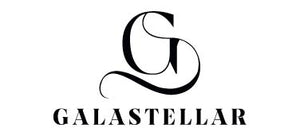











































































































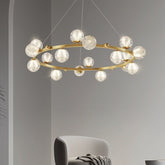

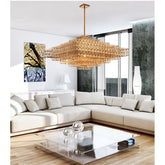





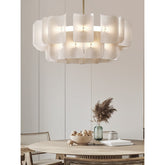

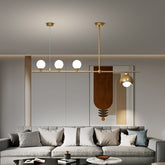

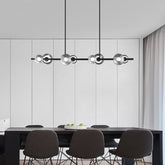



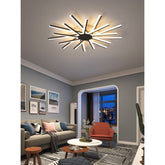




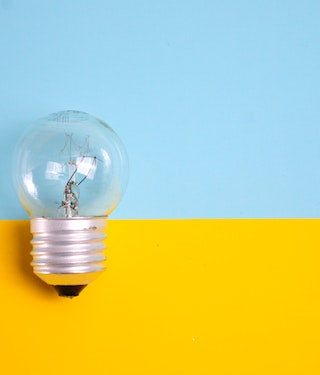

4 Comments
ih7fq8
frlfpi
zgtiel
qglitd